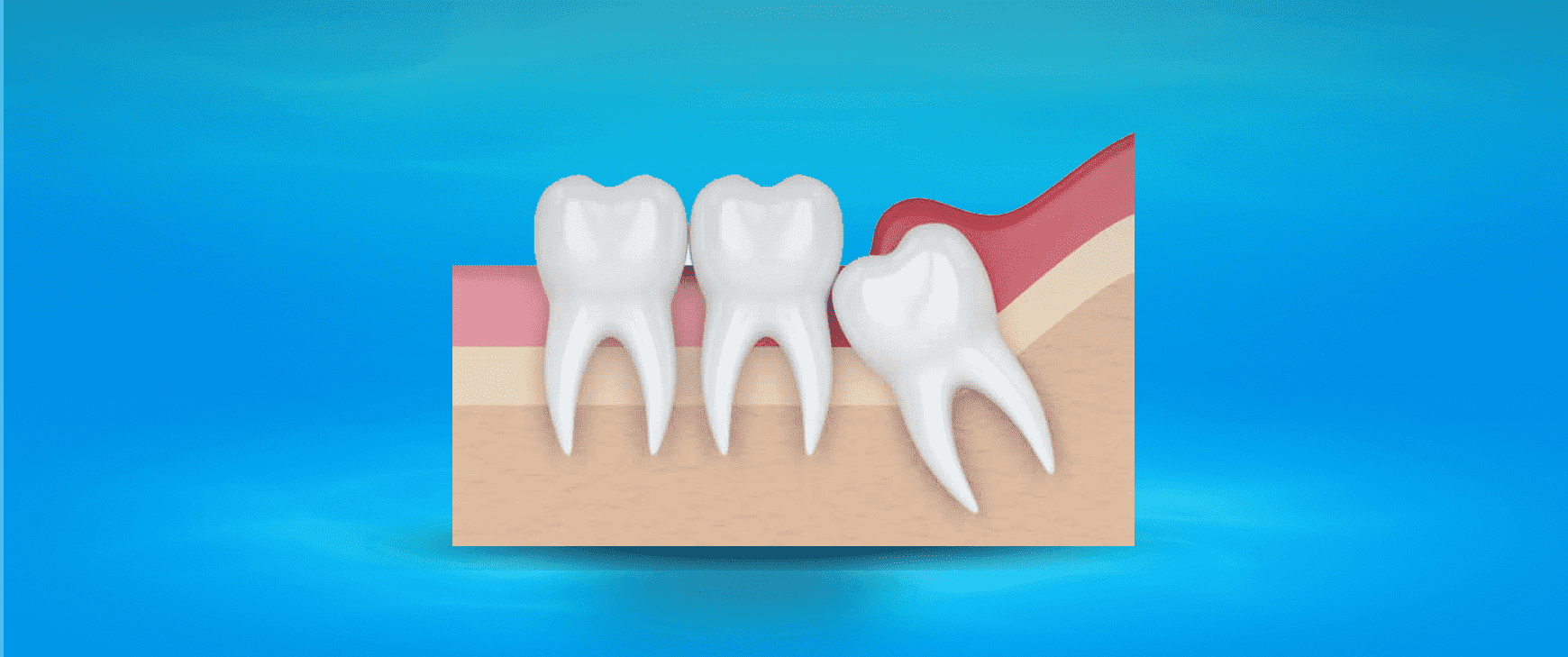Impacted Tooth Extraction
Salih ÖNDER2023-10-26T15:02:25+03:00Due to the lack of space in the tooth jaw structure, the gum may remain buried under another tooth or bone. Impacted teeth appear during the development process of the body. While it helps in biting and chewing functions in some patients, it may develop in a way that harms oral and dental health and even general health in some patients.
Impacted teeth may not be located only in the upper or lower jaw, contrary to the general belief. There are also cases observed in various parts of the body such as sinuses, skull bones, tumoral cysts. Impacted tooth can develop due to genetic reasons as well as due to lack of space.
What are the Situations in which Impacted Teeth Need to be Extracted?
Impacted teeth can cause some problems if they are semi-impacted. Conditions that require the extraction of impacted teeth include:
Caries: If oral hygiene is not taken care of, saliva, bacteria and food residues accumulate around the semi-impacted tooth. This causes decay of the impacted tooth or the tooth next to it. This type of caries is very difficult to clean and the risk of infection is high.
Gum Infection: When impacted teeth are partially erupted, bacteria accumulate under the gums and cause infection. Infection can cause discomfort such as bad breath, pain, swelling and difficulty in opening the mouth in later stages.
Before Orthodontic Treatment: Orthodontic treatment is performed in order to correct the dental arch and tooth alignment in young patients. If the impacted teeth are not extracted, when they try to come out, it causes crooked teeth, especially in the front teeth, in order to find a place for them. In order for orthodontic treatment to be completed successfully, impacted tooth treatment must first be performed.
Cyst Formation: Cyst may occur in the tissues around the impacted tooth, depending on the impacted tooth. Cysts can cause damage to bone tissue, enlargement of the jaw and damage to nearby teeth. Extraction of the impacted tooth prevents the risks of advanced cysts and bone loss in this region.
Before Prosthetic Teeth Treatment: Patients who will have dentures must first undergo impacted tooth treatment. If prosthesis treatment is started without intervention on the impacted teeth, irritation occurs in the soft tissues of the gingiva. In addition, in the future, when the impacted tooth tries to come out, situations such as removal and re-attachment of the prosthesis may be encountered.
When Should Impacted Teeth Be Extracted?
At younger ages, surgery can be performed more easily because the roots of maturity teeth are not fully developed and the tissue is softer. As the age progresses, the treatment may become more difficult as the roots of the teeth will develop. In the treatment of impacted teeth, patients usually wait until they encounter a situation that will disturb them. However, delaying this process is not correct. Recovery develops faster in impacted tooth treatments performed at an early age. Dentists recommend early intervention in embedded dental treatments. The risk of complications increases with advancing age and the healing process slows down.
How Does Impacted Tooth Surgery Happen?
The ease or difficulty of impacted tooth surgery depends on some conditions such as the location of the tooth, its position and root formation. Depending on its position, the impacted tooth is removed as a whole or by separating the roots.
Impacted tooth extraction is performed under local anesthesia, intravenous sedation or general anesthesia. The doctor decides which method is appropriate for the general health of the patient. In buried tooth operations, the anatomy of the region is examined and appropriate and sufficient anesthesia is applied so that the patient does not feel any pain during the operation. During the operation, the bone is removed with the latest technology devices of Dental Group Hospitadent and tooth extraction is easily performed. After the extraction, the area is stitched.
What Should Be Done After Impacted Tooth Surgery?
Facial swelling and moderate pain may occur as part of the post-surgical recovery process. Following are the things that the patient should pay attention to after the surgery:
- The tampon placed in the mouth is removed after 30 minutes to stop the bleeding.
- You should not eat or drink anything within 2 hours following the procedure. In the next process, it is necessary to feed with liquid things such as soup.
- In the first 48 hours, bleeding in the form of leakage and the taste of blood in the mouth can be seen.
- Swelling can be seen on the face for 5 to 7 days after the procedure. Cold compress application is recommended.
- The medicines recommended by the dentist should be used regularly.
- On the 7th day following the procedure, the stitches should be removed and a doctor should be checked.
- Extraction of impacted teeth is successfully performed in all branches by the expert staff of Dental Group Hospitadent’s oral, dental and maxillofacial surgery clinics.
Treatment Summary
Number of Transactions
2-3
Return to Work Process
Now
Processing Time
10 Days
Full Recovery Process
Now
Anesthesia Method
Local anesthesia
Persistence of Results
5 Years
Sensitivity Process
Non
Eating - Drinking Process
2 Hours Later
Note: *The information and recommendations on this page are for informational purposes only. Please consult your doctor for diagnosis and treatment. WhatsApp line.
Bütün İşimiz Diş


